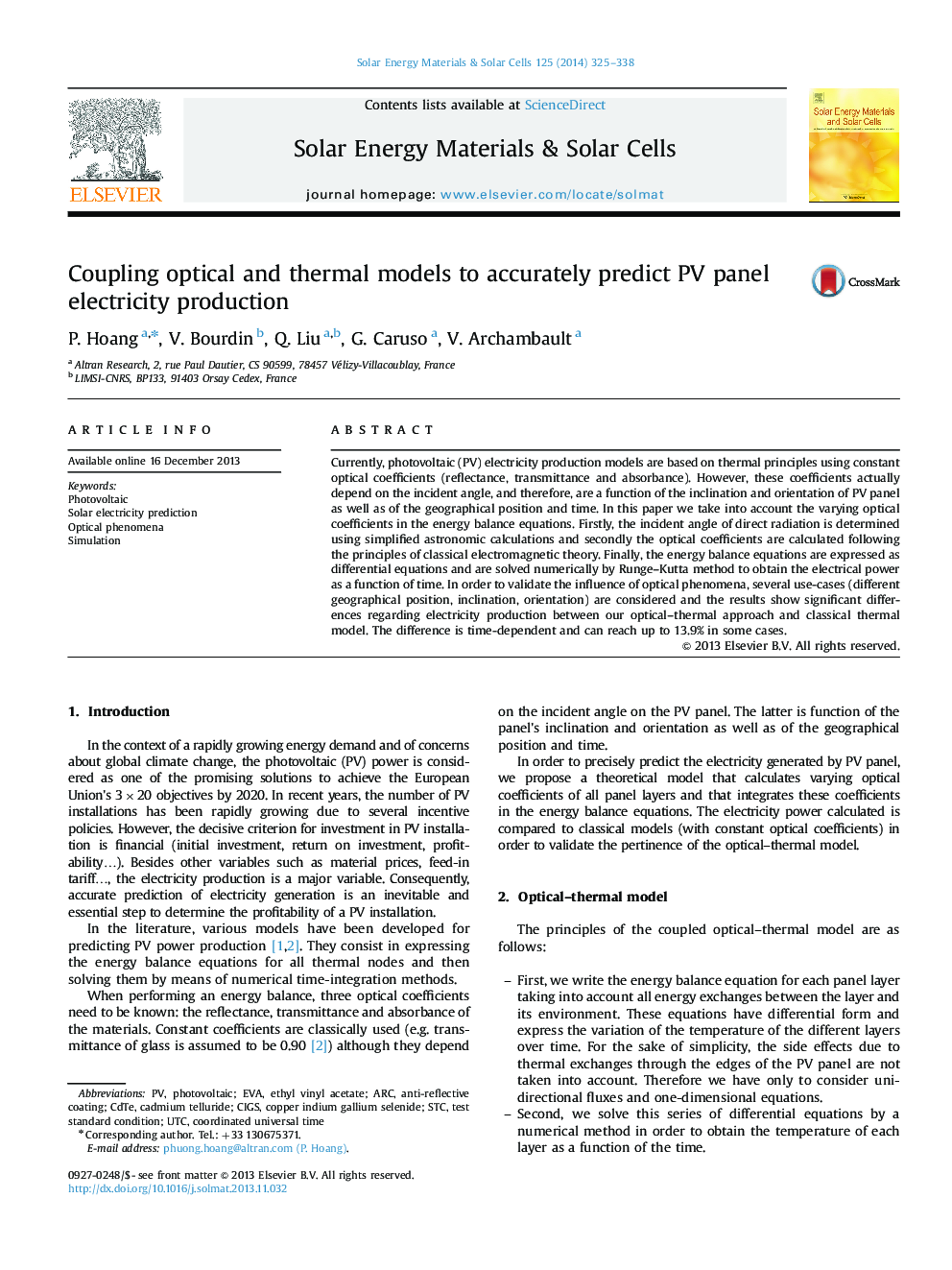| Article ID | Journal | Published Year | Pages | File Type |
|---|---|---|---|---|
| 78120 | Solar Energy Materials and Solar Cells | 2014 | 14 Pages |
•An optical–thermal model is described for the electricity production prediction.•The variations of optical coefficients with the incident angle are considered.•Up to 13% of variation is observed compared to constant-coefficient models.•Optical phenomena are less influencing for optimized inclination and orientation.•But these are significant at sunset and sunrise and during summer days.
Currently, photovoltaic (PV) electricity production models are based on thermal principles using constant optical coefficients (reflectance, transmittance and absorbance). However, these coefficients actually depend on the incident angle, and therefore, are a function of the inclination and orientation of PV panel as well as of the geographical position and time. In this paper we take into account the varying optical coefficients in the energy balance equations. Firstly, the incident angle of direct radiation is determined using simplified astronomic calculations and secondly the optical coefficients are calculated following the principles of classical electromagnetic theory. Finally, the energy balance equations are expressed as differential equations and are solved numerically by Runge–Kutta method to obtain the electrical power as a function of time. In order to validate the influence of optical phenomena, several use-cases (different geographical position, inclination, orientation) are considered and the results show significant differences regarding electricity production between our optical–thermal approach and classical thermal model. The difference is time-dependent and can reach up to 13.9% in some cases.
